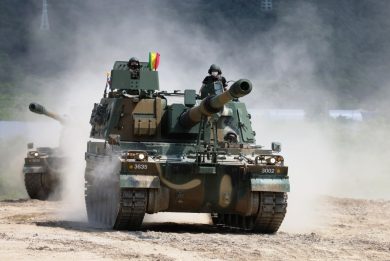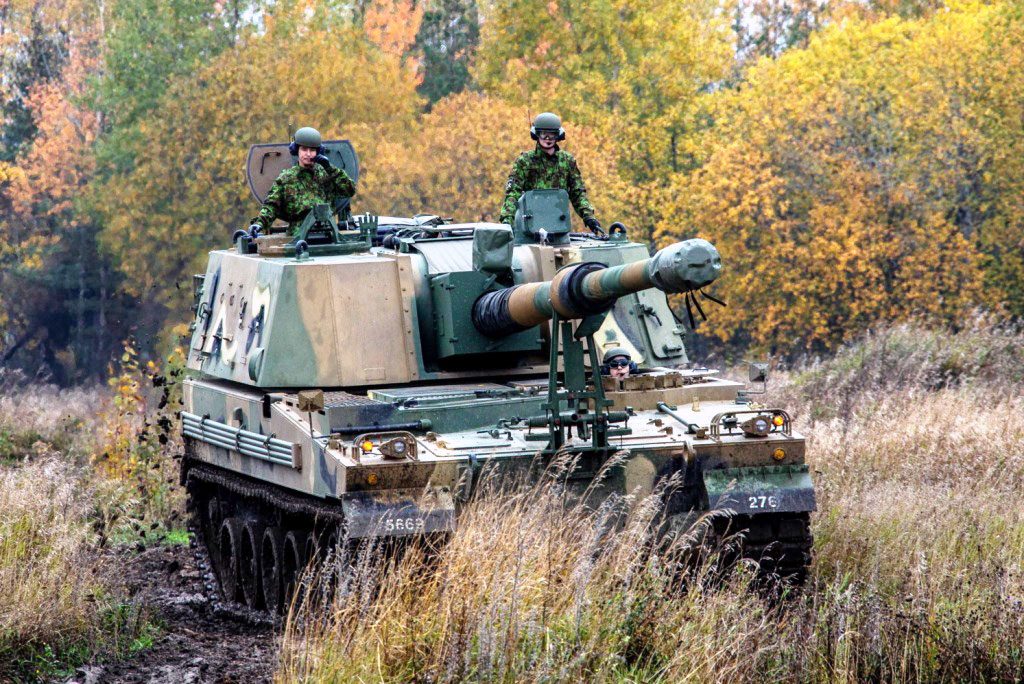
Estonia: Modernising the Fires Inventory
With a population of less than 1.5 million people and a total surface of 45,000 km2, including some 1,500 small islands, Estonia shares nearly 324 km of land border with Russia. Again an independent nation since mid 1991, Estonia, together with its neighbours Latvia and Lithuania, is part of NATO and its Defence Forces are heavily based on conscription, with slightly over 3,000 professional members, some 3,500 conscripts and 60,000 reserve forces, plus the 15,000 of the Defence League. The main Land manoeuvre unit is the 1st Infantry brigade, which includes an artillery battalion, which in peacetime mostly acts as a training unit. Activated in 2014, the 2nd Infantry Brigade has not yet formed all its units, and according to Estonian Ministry of Defence information it will be developed to full readiness by 2022.
At the Defence IQ Future Artillery Online event it was the task of Lieutenant Colonel Arbo Probal, Artillery Inspector, Estonian Defence Forces, to illustrate the evolution of the artillery assets of the small, but politically very important, defence force. Its key position along the border with Russia is definitely the reason that led NATO to deploy the Enhanced Forward Presence (EFP) in that country.
“Due to COVID I have to give the same presentation I prepared for the Spring session, which was postponed; we were supposed to have our Force 2030 plan ready by now, and when the Conference was moved to the right I hoped I could present it,” LTC Probal says, however the pandemic slowed down the planning and the new structure was not yet fully approved at the time of the Online conference.
Opening his speech the Estonian officer underlines the peculiarity of the Estonian forces, mostly based on conscription: “When I was a battalion commander I had in my unit around 20 professionals, all the remaining 600 being reservists, and we were training them,” something that is duly considered when acquiring new assets. The new conscripts arrive to their training units in July every year, those to be employed in key positions being pre-selected for an 11-month duty period while the others serve for 8 months. The build-up is done in phases, with an 8-week soldier basic course followed by a unit basic course lasting 19 weeks, before being dismissed at the end of their service and transitioned to the reserve, to which they belong until they turn 65. Being a pretty small country bordering a potential opponent means that not only the reserve must be kept well trained but also materiel must be ready to be used: “Battalion commanders are responsible for maintaining the force, for maintaining reservists, talking to them on a permanent basis, and they also make sure that all wartime equipment is maintained and ready to be deployed in 24 hours.”
Coming to the artillery, LTC Probal describes the current situation: “In terms of indirect fire assets we have in service right now FH-70 155 mm towed howitzers, the old D-30 122 mm Russian howitzer, m/41D 120 mm mortars made in Sweden, and M252 81 mm mortars,” he says, explaining that in peacetime the Artillery Battalion falls under the 1st Infantry Brigade and is responsible for training the personnel of both battalions, that is also the one belonging to the 2nd Infantry Brigade. The FH-70s and 120 mm mortars are found in the 1st Brigade Artillery Battalion, that of the 2nd Brigade being equipped with D-30s, 120 and 81 mm mortars, while the Defence League is equipped only with heavy and medium mortars.
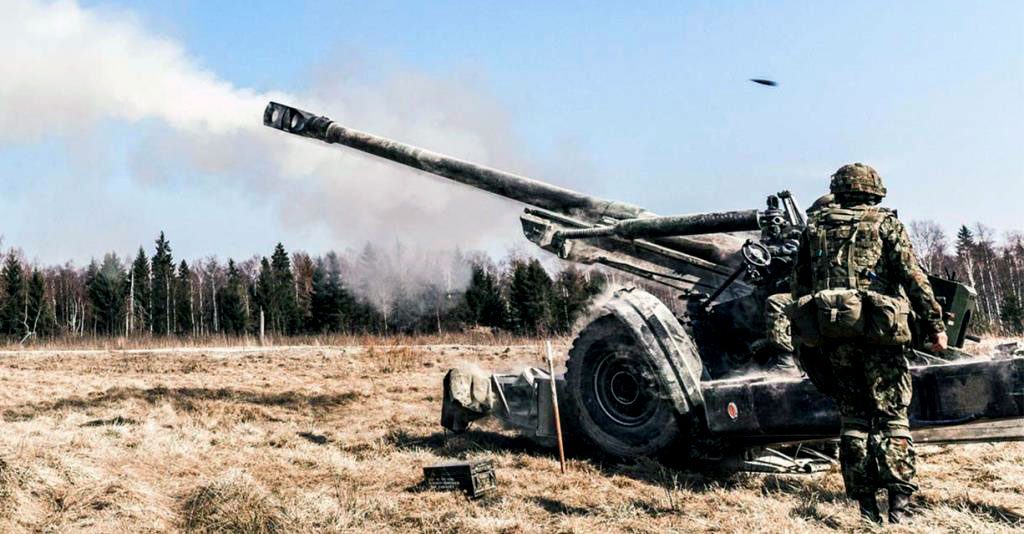
Looking at the geopolitical situation the potential opponent is definitely Russia, “And looking East we can see that they are conducting heavy training with their artilleries,” Probal points out adding that, “If we compare forces we can see that they have a superior command and control network, they can outrange us, and they can outnumber us, in short they have a lot of firepower.”
To respond to that threat LTC Probal says that there is a need to change mentality; “we have to improve interoperability, and the presence of the EFP helps a lot, we have to work with camouflage and deception, we need to find out how to train our forces in situations where the enemy outranges and outmass us, that is how to avoid the counter battery fire if we are unable to reach them with our counter battery fire, but we are very proud of being an Information Technology country, we have a lot of technological companies here in Estonia, and we have to exploit that technology.”
Artillery assets currently available can at their best provide Direct Support to the two brigades. “We do not have any fire capability at the operational level, therefore we must think how to introduce long range precision strike systems, for which we are currently heavily depending on our allies,” the Estonian Artillery Inspector points out. But even at tactical level things must be improved in terms of mobility, lethality, precision, and state of the art ammunition, in order to survive and operate against enemy counter-battery fire. Besides effectors, also target acquisition remains an issue, Estonian forces needing radars and other battlefield sensors; “Shall we acquire them, or can somebody provide us the information coming from his sensors?” LTC Probal wonders.
Based on those assumptions the Estonian Defence Forces identified the requirements, which were put into the 10-year and the 4-year plans, which are renewed on a constant basis according to the Estonian officer.
“Right now we are about completing the design of the Force 2030 structure, we know what we have today and where the roadmap will bring us tomorrow. We also carried out our widest threat evaluation, starting from the potential adversary stance now, and looking ahead to what it might look in 10 years time,” Probal says. Capability gaps have been identified. For artillery, in 2020 the priority was to improve training and procedures, and to get a Fire Support Command and Control system. “As for effectors, the self-propelled howitzer is about to become a reality, and we also drafted audacious plans to have an MLRS battalion, or battery. We are looking into new generation ammunition. We brought all that on the brainstorming table, however we have to provide our decision-makers with additional information. So we had to measure those ideas against some statements, ‘is this suitable for Estonian requirements?’, ‘is it suitable for conscription?’, ‘is it suitable for reservists?’, in short it must be easy to train and to refresh.”
One of the challenges is to introduce new technologies while keeping the same people, so the two must be compatible in terms of training. One of the questions was if it would be better to upgrade existing systems or acquiring new ones. Talking of IT-related solutions, a decision had to be made if it was preferable developing new systems in Estonia or looking for off-the-shelf systems. The last question was affordability, “Considering that our defence budget is roughly 1% that of the United Kingdom,” Probal says, sustainment in the long term being also an issue.
Priorities had to me established, artillery being definitely not the only component of the Estonian Defence Forces that needs to be upgraded. These were also analysed in the light of possible contribution from the Allies in some areas where local forces have capability gaps.
Currently the 2026 plan is the one used as a reference, “But we still look at Force 2030 and hopefully by late 2020 it will be ready.”
One of the identified needs was self-propelled artillery, “Which provides mobility, survivability, and is sufficient to support the 1st Infantry Brigade which would be deployed on the north-eastern part of Estonia,” he says explaining that after having considered different options they decided to go for the K9. According to the Artillery Inspector calculations showed that the programme was affordable as well as sustainable, and being a 155 mm calibre system ammunition should be in principle interchangeable with that of the Allies, and more specifically with the EFP artillery battery. “The K9 is suitable for the Estonian environment, and as much as we could play with it until now it proved to be quite intuitive, the South Koreans also having an Army based on conscription, so it is easy to train and refresh.” One issue that probably influenced the Estonian choice was the fact that two countries in the same geographic region, Finland and Norway, also selected the South Korean self-propelled howitzer.
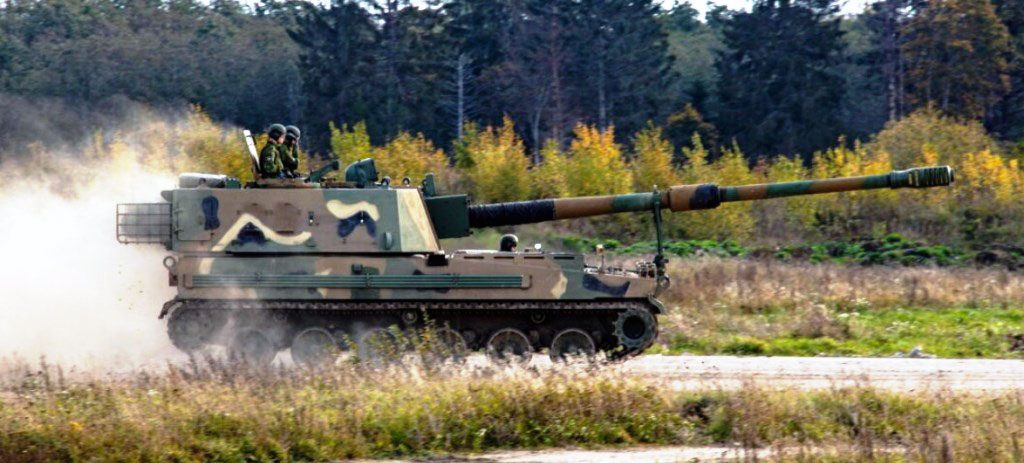
“We received our first two K9 in late August 2020, in early November we should receive a further batch of two, and by year-end we should have six of them on the Estonian soil,” LTC Probal tells the audience. “As soon as we will have the six howitzers we will start to customise them, adding the Estonian radios and other GFE equipment, then in 2021 we will start the drivers course both with professionals and conscripts, and our ambition is to have the battalion ready by 2024,” he says, underlining that challenges are there, one of them being that while training the personnel on the new weapon system, refresher training on old systems will have to continue. In fact Estonia plans are to phase out the old systems only when the K9 battalion will be combat ready, so transition might be a hurdle to overcome. Adjusting logistics to meet the new standards is another critical element, according to LTC Probal, the rate of fire as well as the shorter transition time between one firing position and the next one being elements to consider in order to adapt the ammunition resupply chain. “The introduction of the K9 drags with it the modernisation of other branches, i.e. the fire support command chain will have to adapt to digitalisation, so we have to make sure that the other branches do not stay behind,” the artillery officer notes. The addition of mobility and agility to the artillery will also have an impact on the manoeuvre of the whole Brigade, so the other commanders will have to adapt their training to the presence of indirect fire assets that will be used in a different way and will provide increased capabilities compared to the past.
Coming to the Fire Support Command and Control, this is definitely a priority for the Estonian artillery. “The choice of our Chief of Defence was to develop it in Estonia. It will of course be ASCA (Artillery Cooperation Activities System) compatible; we are working within ASCA thanks to the United Kingdom, which is our sponsor, and we believe we are on the right way,” Probal says. The Command and Control system is named Tooru (Thor in Estonian language) and is being integrated in the Estonian Kolt battle management system. The Tooru is a multimode system, the requirements for it being to enhance the fire support situational awareness, provide rapid data dissemination, ensure fire planning and management as well as position management, ensure fire support coordination measures, be able to control different types of weapon systems, facilitate fire direction centre decisions, support the ammunition management, shorten the sensor-to-shooter response time, and facilitate shoot and scoot, all this with the typical characteristics of ease of use required by a conscript/reservist Army. “We already tested the system, albeit in laboratory, and it is already able to do all calculations, feed data into the K9 fire computer, and we already tested the fire support flow from forward observers to the weapon. It is working and hopefully we will be able to present it to the Chief of Defence in one month time, and if he will give the green light we will then move forward.” With the arrival of the first K9s in Estonia in 2020, 2021 will see the beginning of the fire support digitalisation. “Right now some artillery battalion elements are already digitalised but forward observes are not,” LTC Probal says.
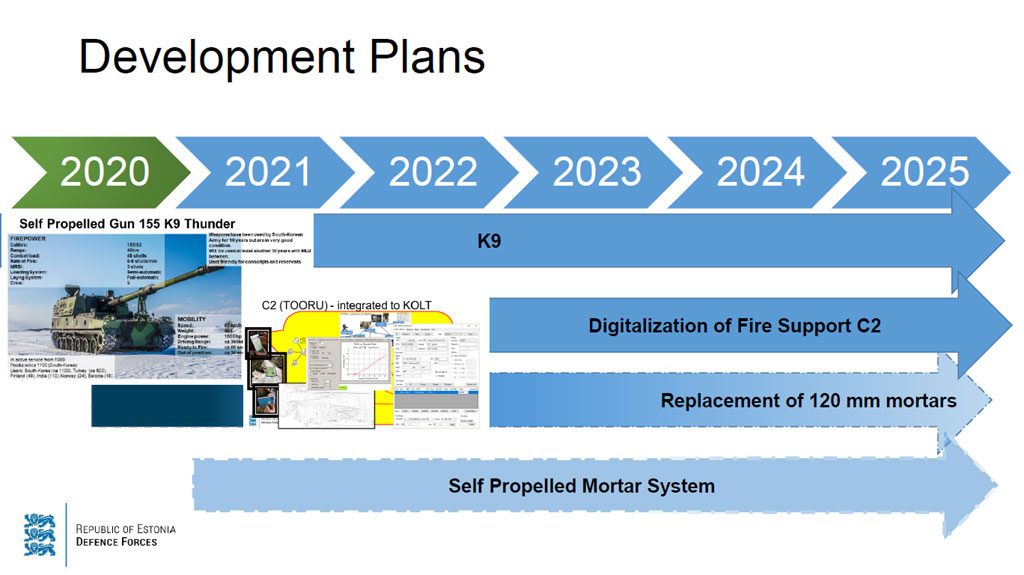
Estonia is also looking at mortars modernisation either by upgrading existing ones or acquiring new ones; this might also include the acquisition of self-propelled mortars that will be intended only for the single Estonian battalion manned by professional soldiers, the Scouts Battalion part of the 1st Infantry Brigade, their number being thus limited. No choice has yet been made on mortars, the research having been launched recently in close cooperation with the Defence Investment Centre. Defence is awaiting to see the country strategy for the next five years in order to understand how much will be allocated for the military in general, and for weapon systems acquisition in particular, and some more information might be available next May, when the next Defence iQ Future Artillery Conference is planned. This will restart the process of listing identified requirements and priorities, based on the Force 2030 organisation that should be available soon. The 10-year Defence Plan is reviewed every for years, so new plans will be available in 2024.
Photos courtesy Estonian Defence Forces

